So you’re thinking of heading to Antarctica. You know you’ll be joined by a group of fellow explorers and an expedition crew, but what about your other companions?
The web-footed, the sharp-toothed and the 100-ton. For many, the unique wildlife flourishing in this harsh environment is what pulls them to the seventh continent. Where else can you see giant pods of migrating whales skimming the water, tremendous seabirds soaring overhead, or inquisitive penguins bumbling over plains of ice? There’s nowhere on earth like Antarctica, so read on to learn about some of the curious creatures you may meet on your journey.
1. Chinstrap penguin
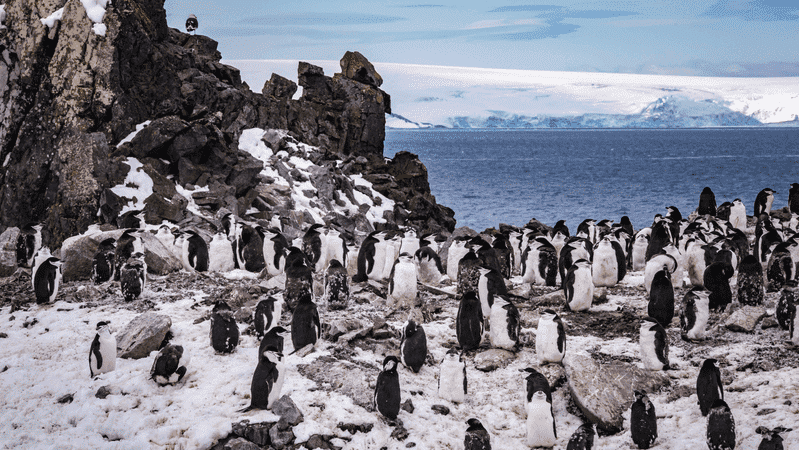
Full of character and every bit as cute, chinstrap penguins are some of Antarctica’s most gregarious guests. Gathering on land in their thousands each year, these little guys put on a big show to impress a mate, banging their flippers on their chest and screeching to the skies above. Named for the band of black feathers beneath their chins, these penguins are easy to define and often the most fun to watch.
2. Orca
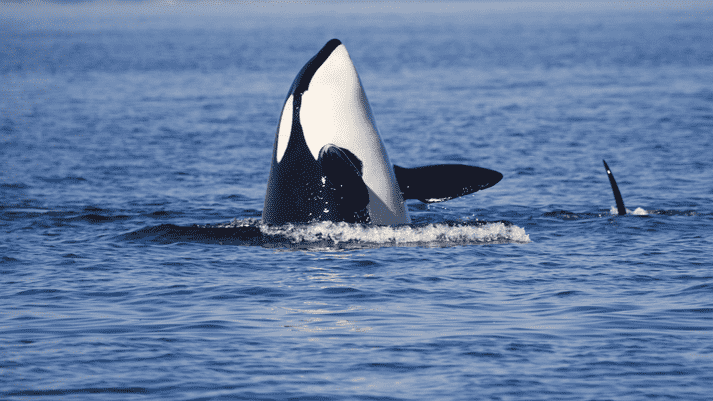
Spotting an orca in the wild is a highlight for many who travel to Antarctica. Their glossy black bodies and contrasting white bellies are a sight to behold. The nickname “killer whale” is a misnomer, as these marvellous mammals actually belong to the dolphin family, but they look like neither – these are some seriously unique creatures! Males grow up to nine-and-a-half metres (31 ft) in length, while females can reach seven metres (23 ft).
3. Elephant seal
As you may have guessed, elephant seals are a hefty bunch — in fact, they’re the largest species of seal in the world. But their name actually comes from the proboscis of the adult males, resembling the trunk of an elephant. The females have smaller noses and are a brown colour, whereas the males are a dark grey. One male can have a collection of around 50 females to guard, but weighing up to 3600 kilograms (4 tons), they’re generally up to the challenge.
4. King penguin
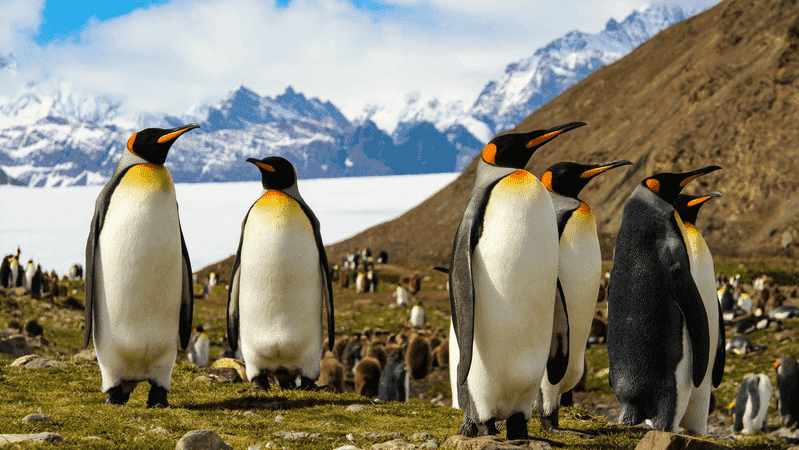
These handsome birds are the second largest species of penguin and live on the sub-Antarctic islands surrounding the continent, where they can be found in their thousands. From a distance, the island of South Georgia appears to be black and white, but a closer inspection will reveal 100,000 pairs of king penguins — a truly remarkable sight. Living up to their name, they make a regal impression with their tall stature and cravat of golden feathers.
5. Albatross
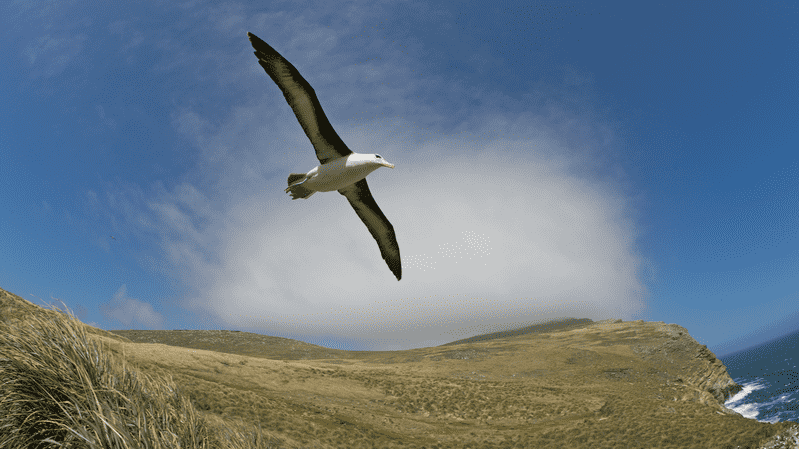
Not all the action takes place on the ground — look to the skies and you may see the awe-inspiring sight of an albatross soaring overhead. With a wingspan of up to 3.45 metres (11.5 feet), the albatross is one of the world’s largest seabirds, making them easy to spot from below. They’re known to follow ships, so your chances of spotting one of these beauties on your Antarctic expedition is pretty good — just be sure to have your camera ready!
Find them on our Best of Antarctica expedition
6. Leopard seal
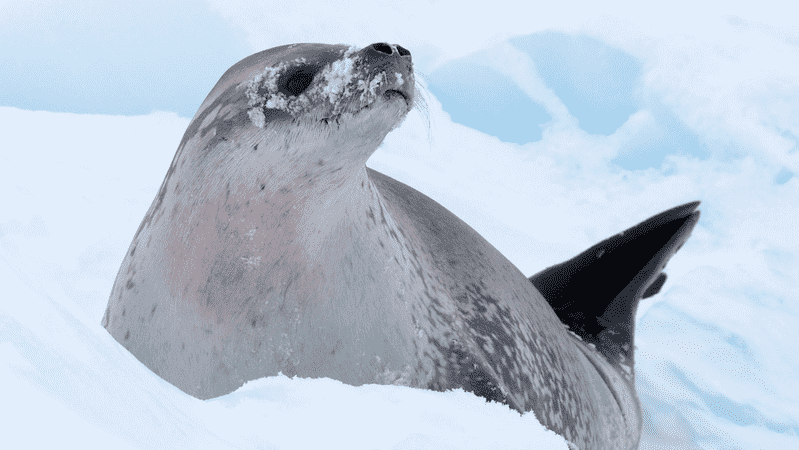
Equal parts fascinating and terrifying, the leopard seal is one of Antarctica’s most ferocious predators. They’re the only seals that kill other mammals for food, including penguins, seal pups from other species, fish and krill. Not particularly sociable fellows, you’re unlikely to see more than one at a time. Characterised by sharp teeth and the spots that give them their name, leopard seals are certainly something to look at (from a safe distance, of course!).
7. Humpback whale
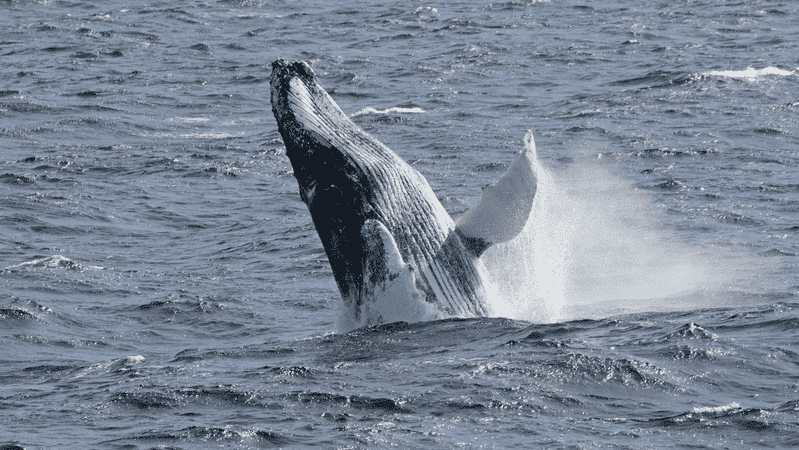
Seeing a humpback whale in Antarctica is a real treat — with an enormous size of up to 53 tons, not only are they fantastic to look at, but they often breach, heaving themselves out of the water and flipping over before crashing back down. With dark colouring contrasting a white under-neck area, humpback whales are easy to identify, and if you’re lucky you may hear their whale song, with each population singing a different tune.
This list is just the tip of the iceberg — check out our full range of Antarctic expeditions to discover these animals and so much more.
